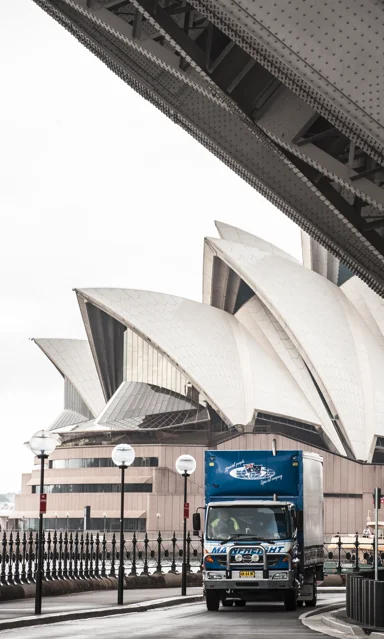- 22 October 2025
Your Guide to Importing into Australia
Australia is one of the largest countries in the world by land area, yet its population is relatively small, averaging just 3.5 people per square kilometre. Despite this low population density, Australia boasts a strong GDP per capita, currently averaging USD $64,407.48. Exports and imports account for 47% of the nation's GDP, highlighting the country's openness to international trade. This presents promising opportunities for importers seeking to expand into the Australian market.
Due to Australia’s strict biosecurity and consumer safety regulations, many find the import process complex. To help, we've compiled answers to commonly asked questions about importing into Australia.
Who are the government agencies that control imports and exports?
Australian Border Force (ABF)
Role: Manages customs and border security.
Key Functions:
-
Processes and clears all imports and exports.
-
Ensures compliance with Australian laws and international agreements.
-
Assesses risk and inspects cargo and documentation.
-
Collects duties and taxes.
-
Prevents entry of illegal or restricted goods.
-
Applies intelligence-led risk profiling to target high-risk shipments.
Impact:
-
Facilitates smooth movement of legitimate trade.
-
Protects the community and economy from threats like smuggling, counterfeit goods and prohibited items.
Department of Agriculture, Fisheries and Forestry (DAFF)
Role: Oversees Australia's biosecurity and agricultural standards and regulates the entry of biological materials into the country.
Key Functions:
-
Inspects plants, animals, food products and other biological imports.
-
Verifies permits and certifications.
-
Conducts physical inspections.
-
Enforces treatment or quarantine requirements.
-
Manages export certifications for agricultural goods.
-
Responds to biosecurity emergencies.
Impact:
-
Protects Australian ecosystems and agriculture from pests and diseases.
-
Maintains Australia’s global reputation as a trusted agricultural exporter.
-
Minimises disruptions to supply chains and public health during outbreaks.
What are the requirements to import goods into Australia?
All imported products must be properly labelled with accurate descriptions. Labels must also clearly state the country of origin or production in English. Failure to comply with these labelling requirements may result in goods being confiscated.
1. Registration
Certain goods must be registered before they can be imported into Australia. These include industrial, agricultural and veterinary chemicals. The regulations are designed to ensure that such products are safe for humans and non-target species, whether through direct exposure or residues in treated food. To be approved for import, the product must be environmentally safe, effective against its intended targets and correctly labelled and packaged.
2. Valuation
All imports must be accurately valued to estimate any tariffs, duties, charges, or taxes. The most common method of valuing goods for customs purposes is by transaction value. Typically, it represents the actual paid (or payable) price for the imported goods. According to the Australian Border Force, it is important to note that customs in Australia use the exchange rate on the day of exporting the products in the valuation.
3. Taxes, duties, and charges
Before you start importing to Australia, there are charges, taxes and duties that may apply. These costs depend on the value and classification of the products. Usually, customs clearance follows upon payment of the relevant tariffs.
There are no duties applicable for goods valued under AU$1,000. However, importers will need an Import Declaration for goods valued over AU$1,000. This rule does not apply to goods such as tobacco or alcohol, where duties and taxes are due regardless of their value.
4. ABN and GST
All goods imported into Australia must undergo customs clearance by the Australian Border Force. To facilitate this process, importers are required to provide an Australian Business Number (ABN). They must also be registered for Goods and Services Tax (GST) to claim input tax credits.
Certain products, such as basic food items and some medicines are exempt from GST. If importing goods is your primary business activity, you may be eligible to apply for GST credits. Furthermore, if you prefer to delay the payment of GST at the time of importation, you can opt into the Deferred GST Scheme administered by the Australian Taxation Office.

What documents are needed to import goods into Australia?
-
A completed Customs Entry or Informal Clearance Document (ICD).
-
An air waybill (AWB) or bill of lading (BLAD).
-
Other supporting documents including invoices for the import.
-
An Import Declaration (N10 Form) – for items with a value greater than AU$1,000.
-
A Self-Assessed Clearance (SAC) declaration – for air-freighted or shipped items that have a value of less than AU$1,000.
-
A Warehouse Declaration (N20) – for items stored in warehouses before clearing customs (valued more than AU$1,000).
How Mainfreight can assist your import into Australia
Any issues with paperwork or non-compliance can result in inspections, hold-ups, or additional costs that impact your supply chain. That’s where our trusted Customs Brokers come in, handling all the necessary documentation, ensuring your shipments meet regulatory standards and staying up to date with changes in laws and procedures. Our role is to manage these complexities for you, so your freight moves through the border smoothly and efficiently without you having to worry about the details.
If you have any questions or need assistance navigating these requirements, please don’t hesitate to get in touch with your local Mainfreight Customs team. We’re here to help your goods move efficiently, securely, and with confidence.
Air & Ocean Services
Our growing worldwide network offers over 28,000 Mainfreight to Mainfreight connections. Find out more about our air freight and sea freight services.
Find out more here